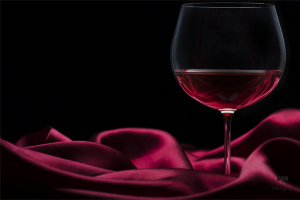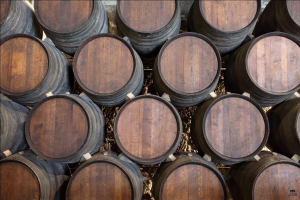DESIGNATION
 If you have ever seen how a specially trained person slowly pours wine from a bottle into a decanter, and then pours it into guests’ glasses, then you are already familiar with the procedure called “decant”. But the question is: is decantation so necessary or is it just a beautiful wine custom?
If you have ever seen how a specially trained person slowly pours wine from a bottle into a decanter, and then pours it into guests’ glasses, then you are already familiar with the procedure called “decant”. But the question is: is decantation so necessary or is it just a beautiful wine custom?
Wine experts still can not agree in opinion – why do decantation is needed. Why it is impossible to pour wine directly from the bottle, and why add a decanter to the process?
Returning to the story, the role of the carafes is becoming clear. After all, before the wine was stored in barrels, and since It was not very convenient to serve it in them, I had to pour wine into a decanter and put it on the table in this form. With the advent of bottles, this custom was elevated to the rank of “good tone”, which is still in demand by refined wine connoisseurs.
There is, however, a practical argument in favor of decanting. It is needed to separate the wine from the sediment formed during its ripening (the word decantation, by the way, means separating the solid substance from the liquid, by mechanically draining the solution). It is believed that the wine sediment can spoil your impression of the drink, although it does not pose a serious threat to your health and serves as a sure indicator that you are in front of a “serious” drink.
Bordeaux red wines, vintage port wines, as well as a number of other high-quality red wines, as a rule, require compulsory decanting. Young wines with small particles in bottles are also found on the market. This happens when the manufacturer intentionally ignored the filtering before bottling in order to preserve the aroma and taste of the drink. The precipitate in white wines is also not considered a defect and decanting is needed only to improve the aesthetic appearance of the drink.
The transfusion of wine into the carafe from the bottle will also help the wine to “breathe out” for the full disclosure of its bouquet. This process in the language of the sommelier is called “aeration” and is often carried out together with decantation. Young red and white wines, including sherry, a wide commercial wine, rosé, champagne, porties of Rubi and Tony, as well as Madeira, can easily do without aeration.
Aeration of old wines requires a certain preparation and directly depends on your luck. You see, no one can tell you with certainty how long, for example, your 20-year-old Bordeaux will last in the decanter. It may be enough for a few hours … or how many minutes. However, if you are 100% sure of the quality of the drink, the likelihood that aeration will spoil it is much less.
Before proceeding to decanting, you need to place the bottle in the wine basket for a few days so that the whole sediment collects at the bottom of the bottle. After that, prepare a carafe, candle or flashlight. Carefully open the bottle without changing its position (so as not to disturb the sediment), then lift so that the light source falls on the neck of the bottle, and start slowly pouring the wine into the decanter. The whole procedure should be carried out in one step so that the whole sediment remains at the bottom of the bottle.
You will need light at the final stage to track the approach of the sediment to the neck. This technique will help you pour the maximum amount of wine into a decanter, without leaving it in a bottle. Important: the approach of solid sediment to the neck is marked by the appearance of “smoky” liquid. This liquid can be skipped in a carafe, but make sure that it does not make a solid residue.
If you do not have a wine basket at hand – it does not matter. It is enough to hold the bottle in an upright position, and then follow the same sequence of actions.
Speaking about the classification of decanters, two main types can be distinguished: for old and young wines. Young wine needs strong aeration, because it helps to better reveal the bouquet of the drink and make it more velvety. That is why the decanters of young wines are distinguished by a funnel neck and a thickened lower part.
Old wines, as already noted, aeration is needed to a lesser extent, so decanters for them has a narrow neck and a spherical shape. All this is needed. To minimize the contact of wine with air.
Decanting will help you expand your wine experience, as well as help to entertain your guests, but re-read this article again before you decide to conduct it. Good luck.




